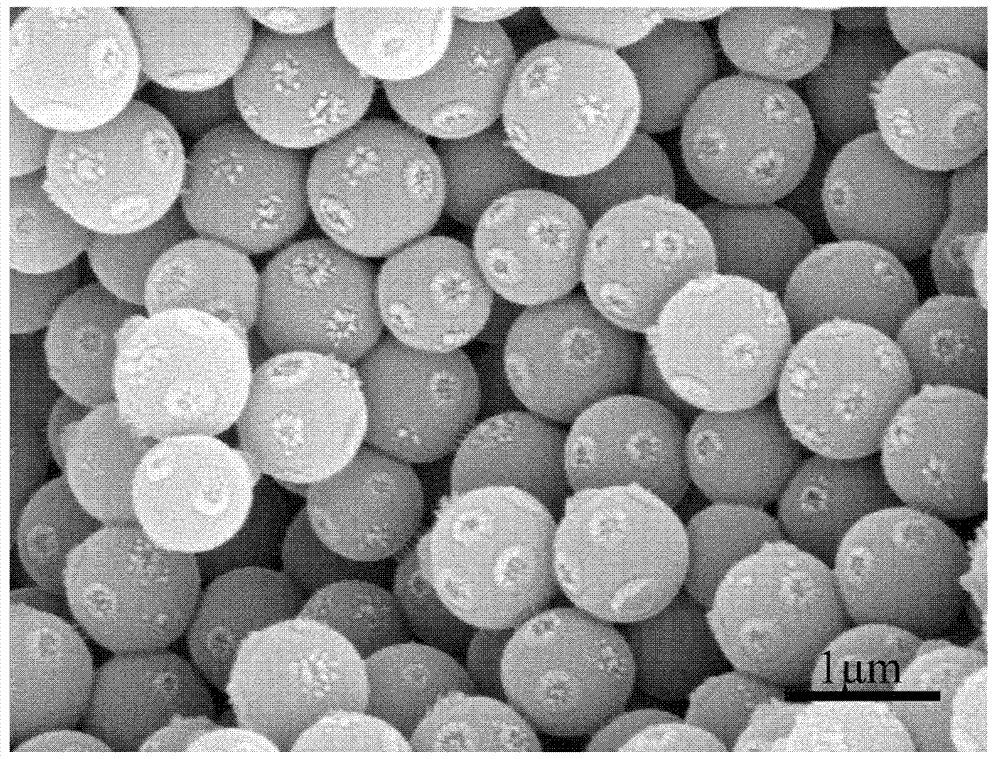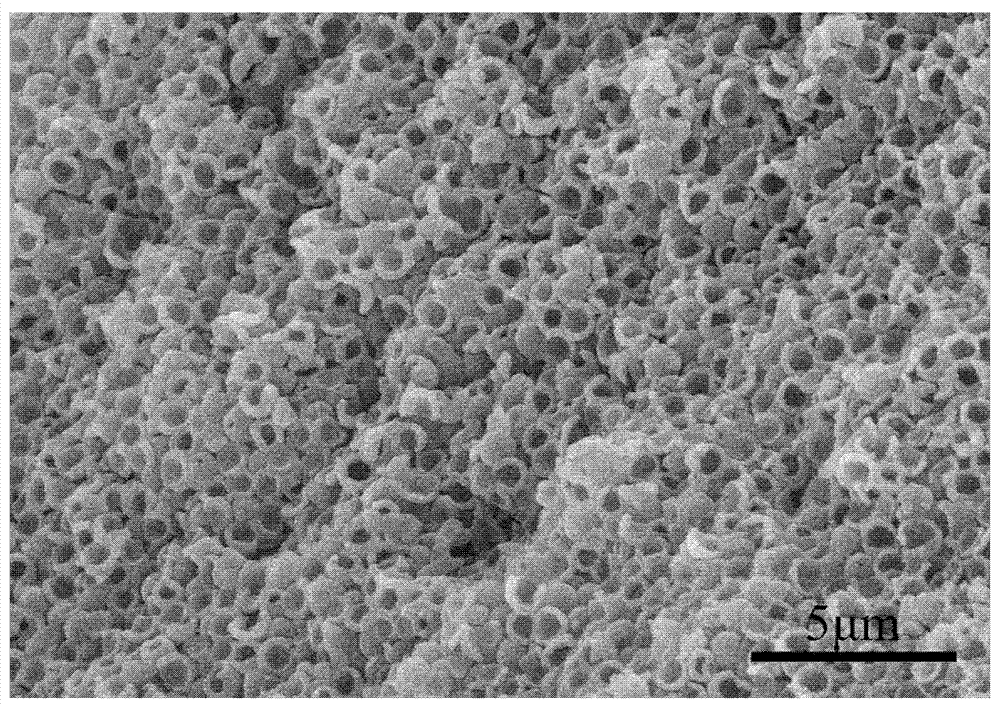Preparation method for polymer-based hierarchical porous structure interlocking microcapsule
A polymer, graded pore technology, applied in the preparation of microspheres, microcapsule preparations, etc., can solve the problems of cumbersome preparation, high price, unstable pore structure, etc.
- Summary
- Abstract
- Description
- Claims
- Application Information
AI Technical Summary
Problems solved by technology
Method used
Image
Examples
Embodiment 1
[0063] (1) Preparation of 600nm silica colloidal crystal template
[0064] Add 145g of absolute ethanol, 34.1g of ammonia water with a mass fraction of 25%, and 35.0g of deionized water to a 500mL three-necked bottle equipped with mechanical stirring at room temperature. After stirring evenly, quickly add 15.4g of orthosilicon Acid ethyl ester, reacted at room temperature for 8h. Transfer the obtained suspension into a beaker, wait for the solvent to volatilize completely naturally, and obtain a colloidal silica template with an average particle size of 600nm, and finally sinter the template in a muffle furnace at 500°C for 3 hours, and slowly lower it to room temperature to obtain A silica colloidal crystal template in which silica microspheres with an average particle size of 600nm are adhered to each other;
[0065] (2) Surface modification of silica colloidal crystal template
[0066] Silane coupling agent [3-(2-bromoisobutyryl)aminopropyl]-triethoxysilane (BITS) modifie...
example 1
[0076] Example 1 The surface area of the obtained material measured by the model Micromeritics ASAP2020M+C automatic specific surface area analyzer can reach 600m 2 g -1 .
[0077] Description: the preparation method of silane coupling agent [3-(2-bromoisobutyryl) aminopropyl]-triethoxysilane in step (2) of the present invention is as follows: (other embodiments are the same)
[0078] Add 40.0mL toluene, 16.0mL (3-aminopropyl)triethoxysilane (APTS), 9.40mL triethylamine (TEA) into the three-necked flask, stir in an ice bath, and dissolve 8.40mL 2-bromoisobutyl Acyl bromide was dissolved in 40mL of toluene, the mixture was added dropwise to a three-necked flask, and the dripping was completed in 1h, stirred in an ice bath for 3h, and then stirred at room temperature for 10h to obtain a solid-liquid mixture, the mixture was filtered, and the filtrate was removed by vacuum distillation. Unreacted TEA and solvent toluene can be used to obtain the surface modifier BITS. The syn...
Embodiment 2
[0080] (1) The preparation of 600nm silica colloidal crystal template is the same as embodiment one step (1);
[0081] (2) Surface modification of silica colloidal crystal template
[0082] γ-methacryloyloxypropyltrimethoxysilane (MPS) modified silica colloidal crystal template, put 0.3g of dried and sintered silica colloidal crystal template into a 250mL three-necked bottle, add 100ml of ethanol , distilled water 2.5mL, ammonia water 0.25mL, stirred mechanically at 25°C, added γ-methacryloxypropyltrimethoxysilane (MPS) 1.5mL, condensed and refluxed at room temperature for 24h. Stop stirring after the reaction, discard the liquid, wash and replace with absolute ethanol three times, and finally vacuum-dry at 25°C for 12 hours to obtain an MPS-modified silica colloidal crystal template with an average particle size of 600nm;
[0083] (3) Silica colloidal crystal template controllable grafting of polymer segments
[0084] Add 0.03 g of MPS-modified silica colloidal crystal temp...
PUM
| Property | Measurement | Unit |
|---|---|---|
| The average particle size | aaaaa | aaaaa |
| The average particle size | aaaaa | aaaaa |
Abstract
Description
Claims
Application Information
 Login to View More
Login to View More - R&D
- Intellectual Property
- Life Sciences
- Materials
- Tech Scout
- Unparalleled Data Quality
- Higher Quality Content
- 60% Fewer Hallucinations
Browse by: Latest US Patents, China's latest patents, Technical Efficacy Thesaurus, Application Domain, Technology Topic, Popular Technical Reports.
© 2025 PatSnap. All rights reserved.Legal|Privacy policy|Modern Slavery Act Transparency Statement|Sitemap|About US| Contact US: help@patsnap.com



